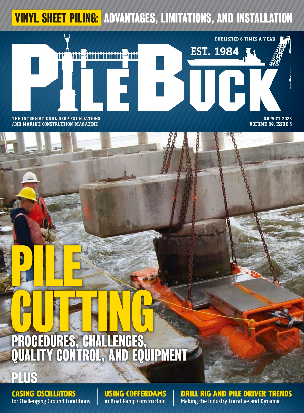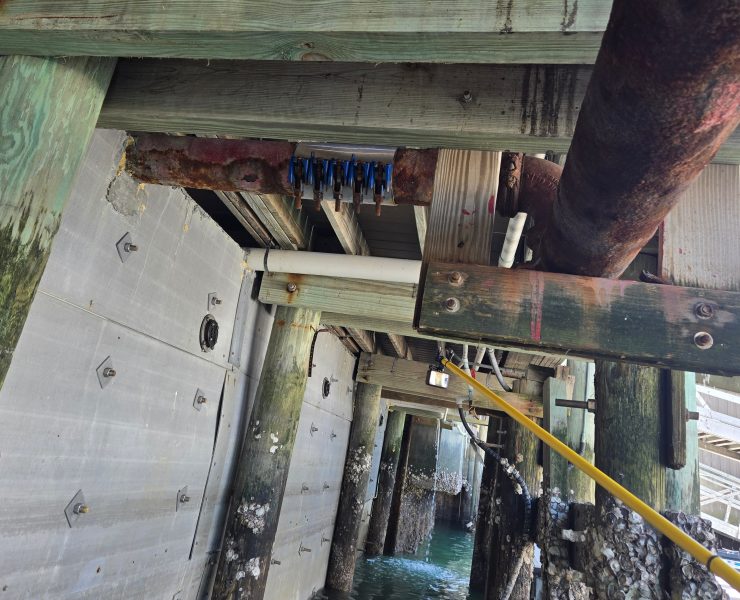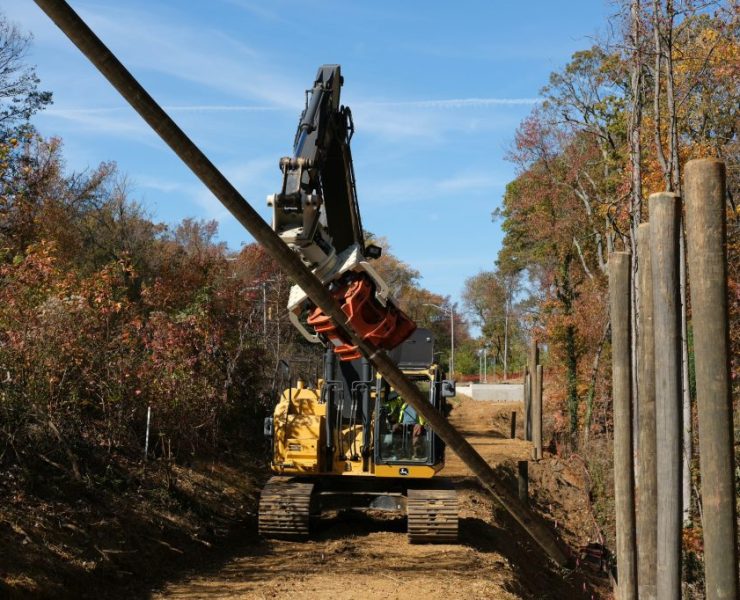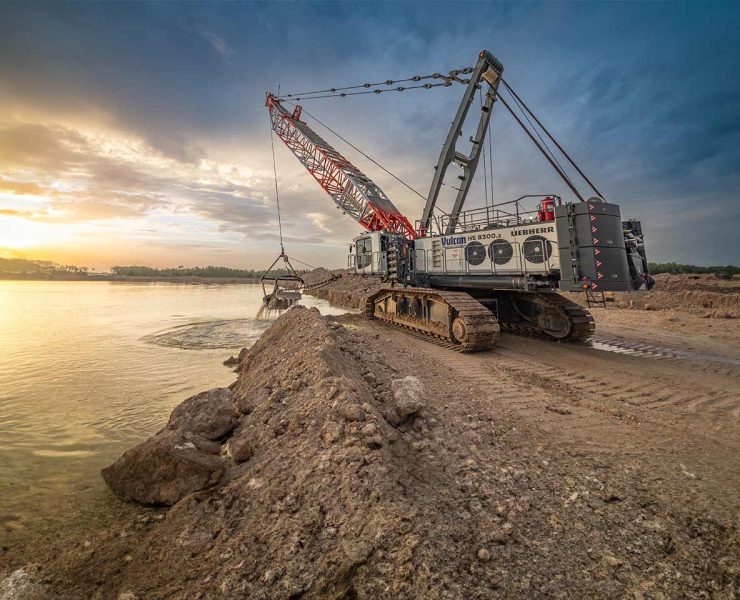Concrete Jackets Critical For Deteriorating Piers Supporting Newark Bay Bridge
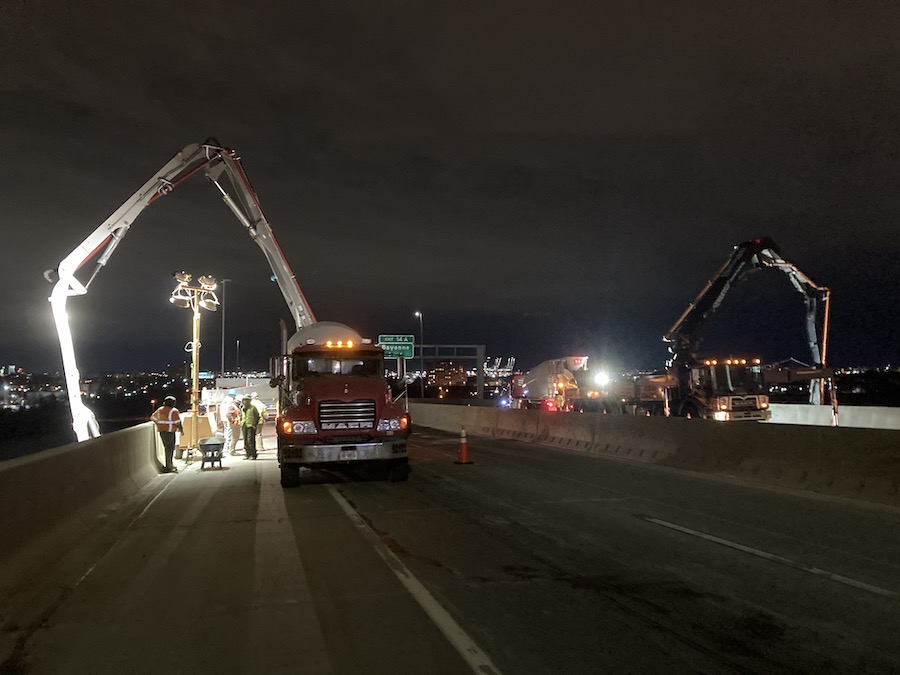

By Conor Nielsen
Mount Construction won this competitive contract to pour concrete jackets around multiple deteriorating piers supporting the Newark Bay Bridge, a direct tributary to the Holland Tunnel and downtown Manhattan used by thousands of commuters every day. Cofferdam installation was the first step toward the jacketing process, as the jackets extended about 10 feet below the water line at mid-tide and needed to be poured in the dry.
Every job has it’s obstacles and this one is certainly no exception. To put it simply, a few contractual speed bumps pushed the initially scheduled mid-Summer cofferdam installation back far enough that the final sheet was not driven until Christmas Eve. Multiple obstructions removed from below the mudline also impacted the schedule.
Once the cofferdam was closed, the pouring of a tremie concrete seal was queued up. This would not only seal the cofferdam against upward water pressure, but also give workers a solid and level platform to work off for the coming months. The activities to follow would include granite stone removal, concrete spall repairs, rebar and formwork installation, and finally, concrete jacket pouring – all activities that our crew would prefer to not be standing in mud and re-fueling pumps during.
So, the concrete seal was a critical component to a successful future of the project. We signed up two Putzmeister 47Z Concrete Pump Trucks to pour simultaneously off each side of the bridge, cutting our lane-closure time in half. They came with enough boom to pump over the bridge barrier and down the 100+ feet to the mudline. With outriggers deployed, these trucks barely squeezed into our allotted two-lane closure.
 Unfortunately, the only concrete trucks available and capable of completing the job were rear discharge. This may seem like no big deal, until we came to the realization that we would need to drive the 40’ long pump truck in the opposite direction of traffic up one of the busiest bridges in the tri-state area. The only way to accomplish this was on a weekend night starting at 10 PM. Ironically, the decrease in traffic due to the Covid-19 pandemic allowed the NJTA to grant us a greatly appreciated extended lane closure for this 260 CY pour. Rather than 8 hours, we were allowed 10.
Unfortunately, the only concrete trucks available and capable of completing the job were rear discharge. This may seem like no big deal, until we came to the realization that we would need to drive the 40’ long pump truck in the opposite direction of traffic up one of the busiest bridges in the tri-state area. The only way to accomplish this was on a weekend night starting at 10 PM. Ironically, the decrease in traffic due to the Covid-19 pandemic allowed the NJTA to grant us a greatly appreciated extended lane closure for this 260 CY pour. Rather than 8 hours, we were allowed 10.
We had scheduled two dates for overnight closures, with one being the rain date. As we came to expect at this point of the job, the big nights once clear forecast turned to heavy rain during the week leading up to the pour. That left us one more chance to get the job done or else we risk applying for re-approval and lose more time on our tight schedule.
We were experiencing below freezing temperatures with 20 MPH winds on the night of… not ideal but it beats torrential rain. Multiple New Jersey State Troopers began to shut down the two right lanes on both the eastbound and westbound sides of the bridge. Our pump trucks followed suit, driving against traffic, and arriving to find a crew of 30+ workers on top of and below the bridge. After experiencing the minor setbacks leading up to this point, we were taking no chances with this high-stakes operation. There were some minor hiccups during the pour, but none of them fatal. All 260 CY of concrete were in the bottom of the cofferdam before sunrise.
This operation was a hard lesson in all the pre-construction planning and engineering necessary just to mobilize equipment and start the real work. Mount’s team, led by Matthew Mazalewski (Project Manager), worked in concert with the CM, Designer and Owner to take all the small steps necessary so that on the night of, the work could progress nearly flawlessly.












